2016 Jaguar XF: Car Seat Check

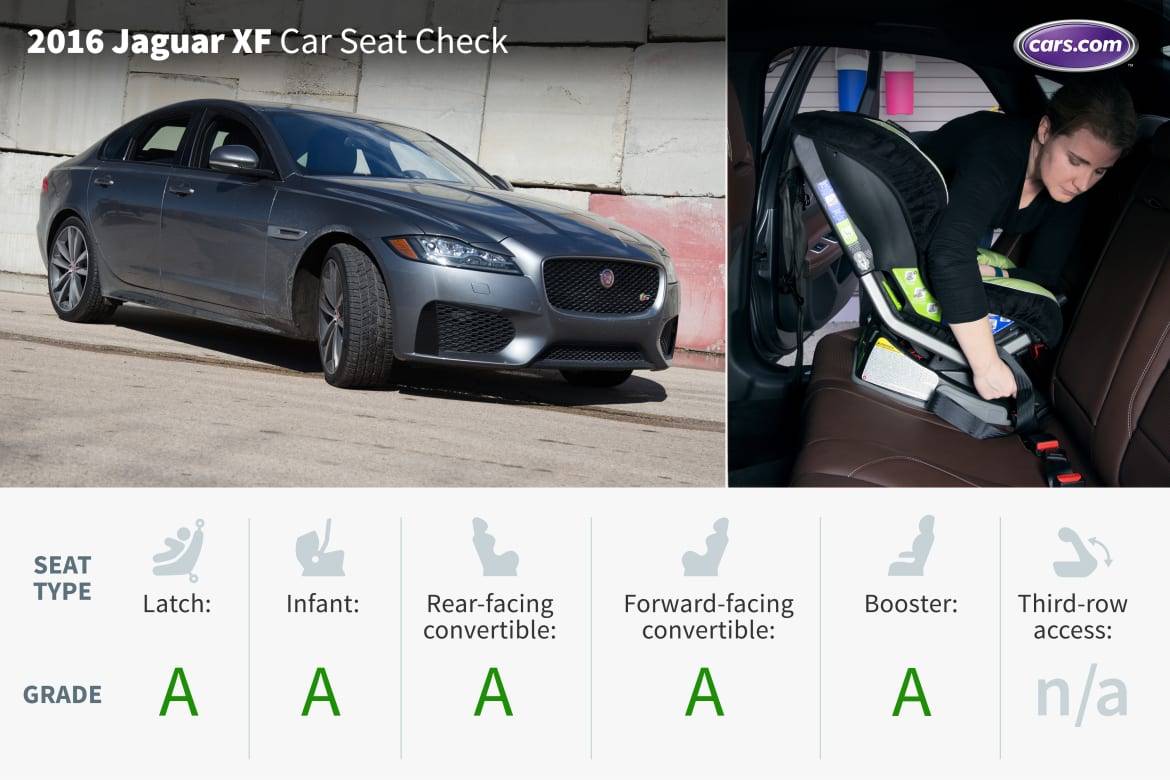
CARS.COM — Jaguar redesigned its XF sedan for 2016. The second-generation XF got bigger this year, which means more space for backseat passengers: There’s an additional 0.6 inches of legroom, 0.9 inches of knee room and 1.1 inches of rear headroom, according to Jaguar. For this Car Seat Check, we tested an XF S model with leather seats. Thanks to easy Latch anchors and more space, the 2016 XF accommodated car seats better than the outgoing version.
How many car seats fit in the second row? Two
What We Like
- The two sets of Latch anchors in the outboard seats sit under removable plastic covers and are easy to access. Three well-marked tether anchors are on the rear shelf behind the head restraints.
- Both the infant seat and rear-facing convertible installed easily and fit well; we did not have to move the front passenger seat forward to accommodate them.
- The forward-facing convertible went in easily and fit well.
- The backseat cushions are bolstered and hold the booster snugly in place. The outboard seat belt buckles are on stable bases, making them easy for kids to use independently.
What We Don’t
- Nothing.
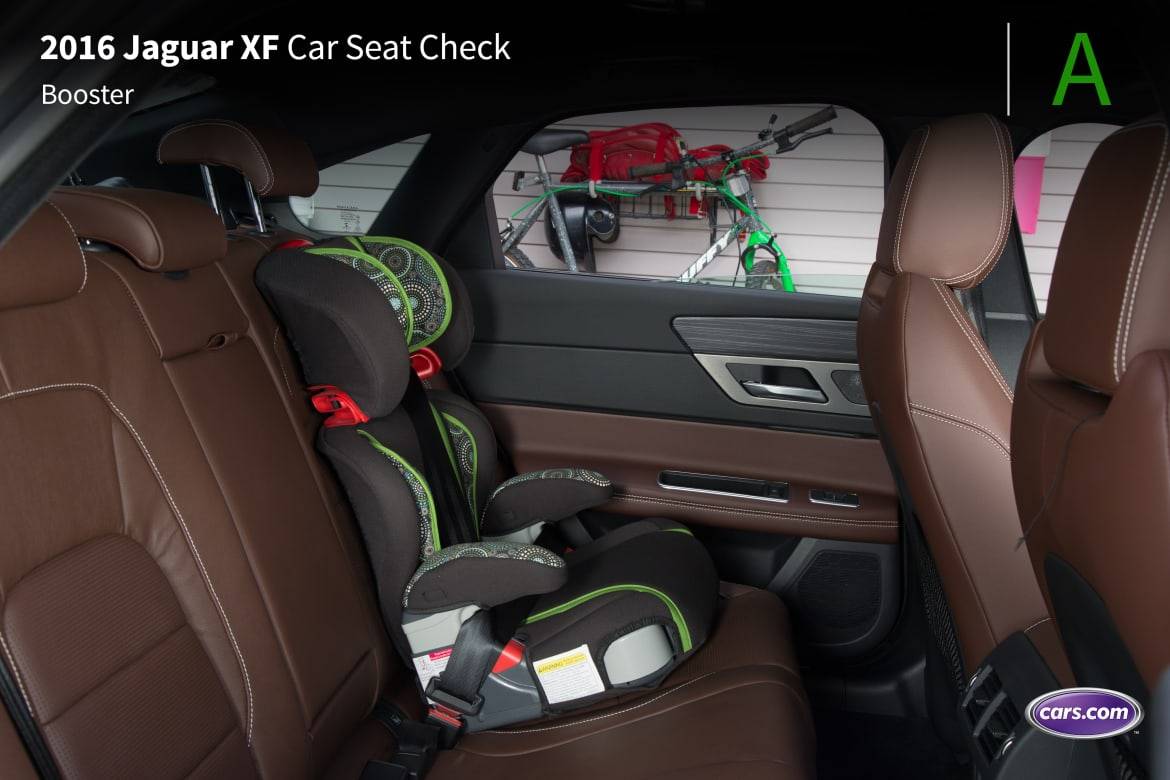
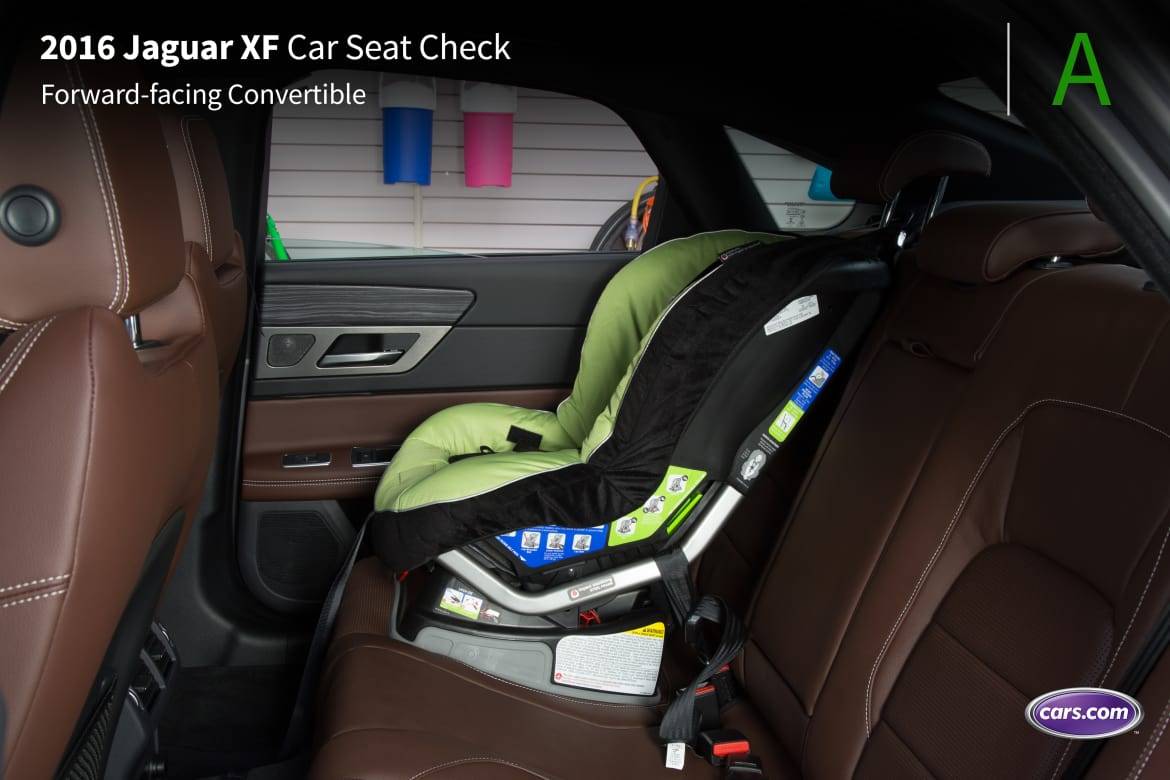
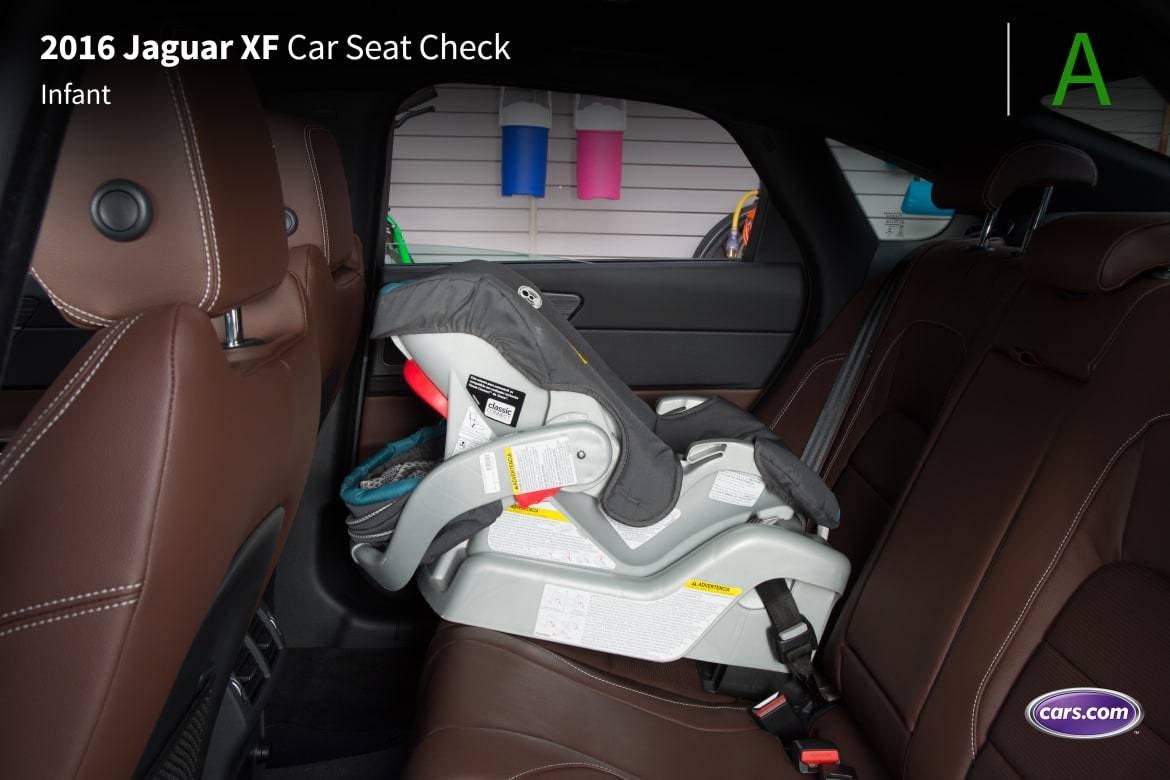
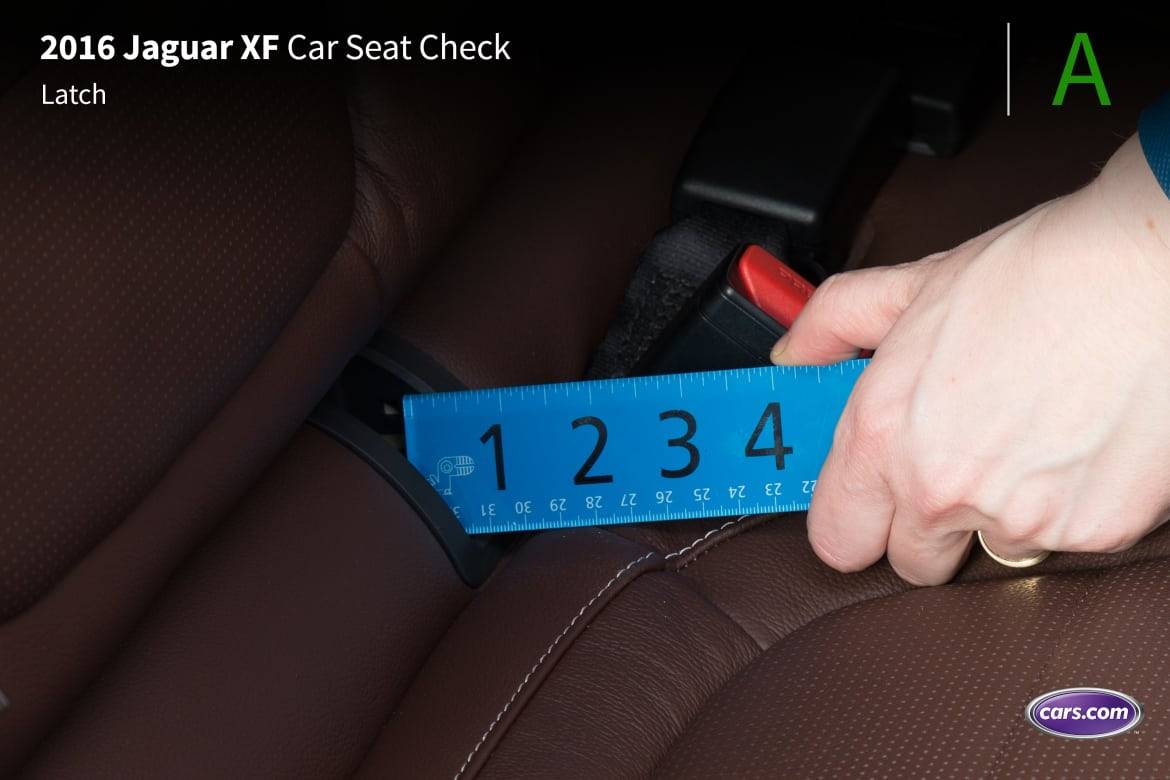
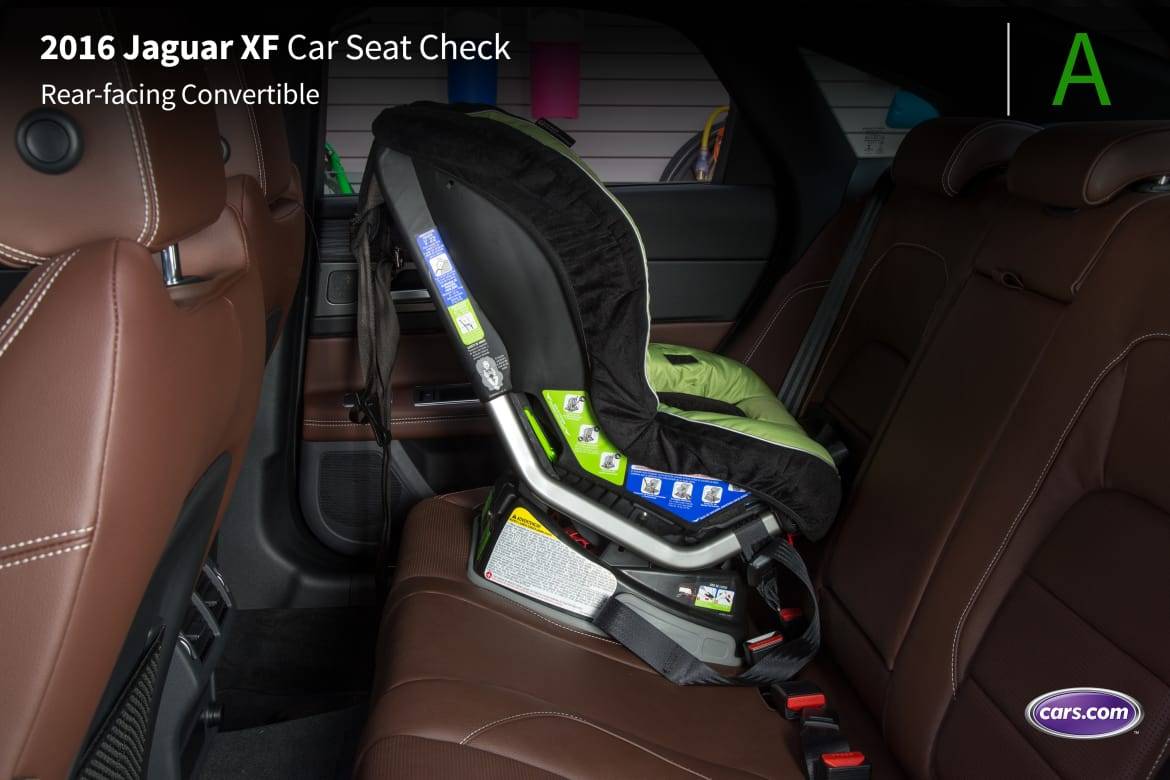







Grading Scale
A: Plenty of room for the car seat and the child; doesn’t impact driver or front-passenger legroom. Easy to find and connect to Latch and tether anchors. No fit issues involving head restraint or seat contouring. Easy access to the third row.
B: Plenty of room. One fit or connection issue. Some problems accessing third row when available.
C: Marginal room. Two fit or connection issues. Difficult to access third row when available.
D: Insufficient room. Two or more fit or connection issues.
F: Does not fit or is unsafe.
About Cars.com’s Car Seat Checks
Editors Jennifer Geiger and Jennifer Newman are certified child safety seat installation technicians.
For the Car Seat Check, we use a Graco SnugRide Classic Connect 30 infant-safety seat, a Britax Marathon convertible seat and Graco TurboBooster seat. The front seats are adjusted for a 6-foot driver and a 5-foot-6 passenger. The three child seats are installed in the second row. The booster seat sits behind the driver’s seat, and the infant and convertible seats are installed behind the front passenger seat.
We also install the forward-facing convertible in the second row’s middle seat with the booster and infant seat in the outboard seats to see if three car seats will fit; a child sitting in the booster seat must be able to reach the seat belt buckle. If there’s a third row, we install the booster seat and a forward-facing convertible. To learn more about how we conduct our Car Seat Checks, go here.
Parents should also remember that they can use the Latch system or a seat belt to install a car seat, and that Latch anchors have a weight limit of 65 pounds, including the weight of the child and the weight of the seat itself.

News Editor Jennifer Geiger joined the automotive industry in 2003, much to the delight of her Corvette-obsessed dad. Jennifer is an expert reviewer, certified car-seat technician and mom of three. She wears a lot of hats — many of them while driving a minivan.
Featured stories










